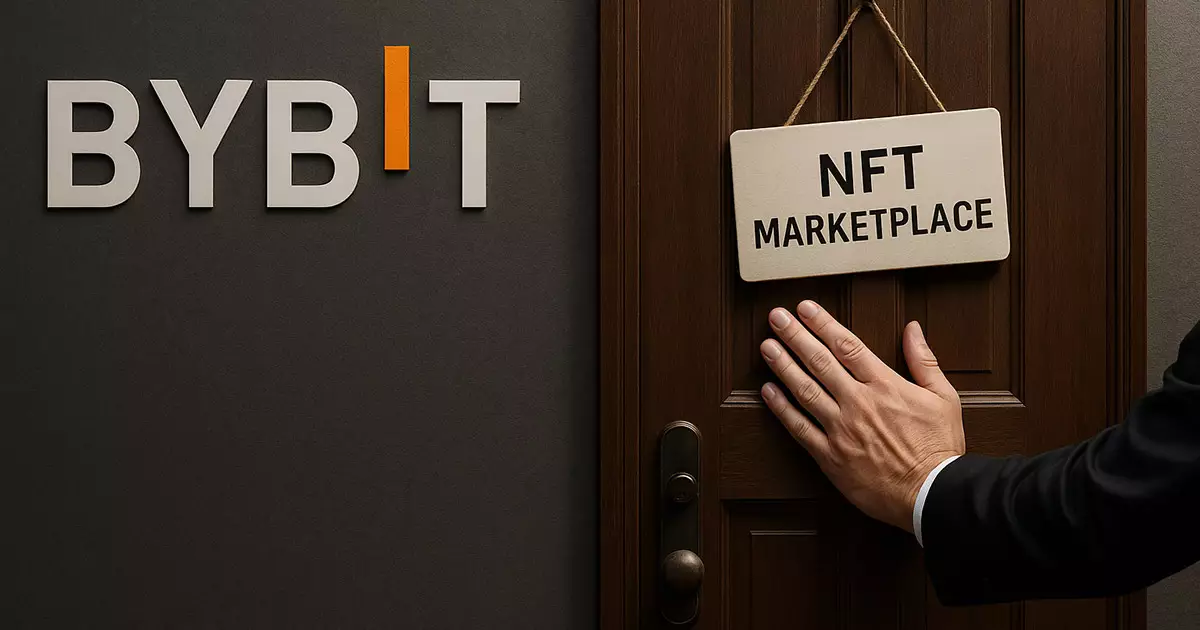The non-fungible token (NFT) market, once heralded as a revolutionary frontier in the landscape of digital ownership, is experiencing a rapid decline that echoes across platforms and projects alike. Bybit’s recent announcement to shutter its NFT Marketplace, Inscription Marketplace, and Initial DEX Offering (IDO) product pages, effective April 8, 2025, epitomizes this alarming trend. This move is not just a strategic retreat but a desperate attempt to adapt to a marketplace that has seen staggering decreases in both demand and user engagement. The unfortunate reality for Bybit mirrors a grim chapter in the NFT saga: once considered the spearhead of digital innovation, the marketplace now stands at the precipice of irrelevance.
Market Values Decimated: The Numbers Speak Volumes
Recent statistics from industry observers paint a devastating picture. According to DappRadar, trading volumes of premier NFT collections plummeted by over 95% since their unprecedented heights in 2021. The internal structures sustaining this market have begun to crumble, with active wallets engaging in NFT transactions plummeting from an impressive half a million to a mere 20,000 units by 2025. Additionally, total NFT sales in the first quarter fell to $1.5 billion, a staggering decline of 63% year-over-year. March alone witnessed a 76% drop in sales compared to the previous year, leading one to question the sustainability of this once-buzzy sector.
While a handful of niche collections, such as Pudgy Penguins and Doodles, manage to secure a foothold—with sales notably boosted by savvy partnerships—these success stories are increasingly overshadowed by the broader market malaise. Major projects, once synonymous with wealth and prestige, are now struggling to maintain believers and investors alike, marking a turning point that leaves enthusiasts disheartened.
Security Breaches and Institutional Retreats: An Eroding Confidence
Not to be lost amid the statistics is the essential concern about security that has plagued the NFT space. Bybit’s unfortunate entanglement with North Korean hackers, who siphoned away an estimated $1.4 billion in digital assets, has cast a long shadow. The resulting hesitancy from institutional players is palpable, with Kraken and even LG Electronics recently folding their NFT initiatives. It’s evident: the NFT arena is not just fraught with a lack of consumer interest; it is beset with vulnerabilities that deter institutions and creators from bravely venturing forth.
The culmination of these events reflects a stark reality that the NFT sector’s optimism has turned into skepticism. Bybit’s decision to exit the NFT spectrum and streamline its focus underscores an ongoing economic readjustment, with the market now in a precarious state. This pivot does not only highlight failed ventures; it serves as a cautionary tale for tech enthusiasts and investors who might still be clinging to a vision of NFTs as a digital goldmine.
In this moment of reckoning, it is evident that the NFT phenomenon, once a harbinger of unprecedented opportunities, faces a bleak and uncertain future. The road ahead seems laden with challenges, and unless there are profound reinventions within this space, one has to wonder if we have already witnessed the pinnacle of NFT market potential.



















Leave a Reply